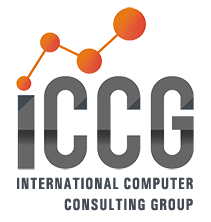From bakeries to zucchini farmers, food and beverage companies are eager to pursue avenues of growth. Many endeavor to jump start these opportunities by embracing modernization and adopting digital strategies. New technologies offer exciting ways to leverage data, engage with customers, and automate processes. As a result, new and innovative ways of looking at products and the supply chain develop, transforming how we do business. While the potential impact of digital transformation is promising, it can also be intimidating. Where do you start? How do you measure success?
To answer these and other critical questions, use this checklist to help guide your successful digital deployment.

1) Define a clear mission
Your digital action plan must start with the key mission you hope to achieve. This should be related to the very core of why your organization exists. What experiences and products do you want to offer? You must be crystal clear on this point. Although product and service offerings are often blended today, you need to be able to clearly define your goal. If you can’t articulate your mission, chances are your personnel, partners, and customers will be confused and unreceptive.
2) Invest in innovative thinkers
Balancing the workforce between doers and thinkers is important. Every company in the food and beverage industry has a mix of hands-on workers and managers who focus on bottom-line profitability. But you also need the creative problem solvers who can bring imagination and a vision for the future. “If an organization has many scientists, technologists, engineers, or mathematicians, it should add artists, ethnographers, anthropologists, design thinking experts, and story tellers,” says Wang. Different perspectives can spark creative thoughts and fresh approaches to solving business problems. Encourage these individuals from divergent disciplines to form teams and learn from each other.
3) Focus on business models first
Conceptualize your business model first, then decide how to execute it. Keep in mind you can have more than one business model and multiple revenue streams. Start from a core objective and then work out what technologies, people, and systems you need to support the model. Multiple layers of partner networks, ingredient suppliers, processors, and packagers may be involved, as well the need to manage seasonal variables. Map these out early and in detail, as these contributors will likely impact the cost of doing business and margins.
4) Move to data-driven decisions
Data is what makes the digital engine run. Collecting, understanding, and leveraging data in a meaningful way is the crux of the digital era. In order to take advantage of modern capabilities, you need devices and systems for collecting, storing, and aggregating millions of random data points into logical patterns. Data must be accurate, real-time, accessible, and relevant. Smart sensors that can monitor and communicate condition and location are the driving force behind many digital initiatives. In the food and beverage industry, sensors are often used to monitor environmental temperature—from shipping to storage and processing. Sensors are also used to optimize feeding herds and growing crops, as well as tracking weather and soil variables. As sensor capabilities expand and costs decline, more use-cases will be discovered. Data points can also come from batch formulas, sales, consumer trends, and cost analysis. Access to accurate, timely data helps managers be confident in their decisions and allows them to set strategies based on science, not hunches or anecdotal comments. To reach this level of sophistication, you need the ability to store and aggregate large amounts of data. Cloud deployment is a necessity for practical, economical storage of vast data.
5) Focus on co-innovation and co-creation with partners
Cooperating with partners on new products and services is becoming increasingly important in the food and beverage industry as consumer trends evolve and concepts like farm-to-table, ready-to-make, and meal-clubs (which ship ingredients and recipes to your door) gain in popularity. These types of experiences often involve innovations in packaging, e-commerce, and the ability for consumers to make personalized choices based on diet restrictions, number of servings, taste preferences, or preparation abilities.
Blended business models often mean a crossover of two niche specialties. For instance, take-home-and-bake pizza merges “carry-out” and “frozen” food for a product that stresses conveniences, value, and family mealtime. Vending machines and self-serve stations—which offer anything from flavor-personalized cappuccino to mix-and-match ice cream dots—combine food and technology. By thinking beyond traditional delivery mechanisms, companies can start to see
6) Create cross-functional teams to execute ideas
Your IT team can’t plan and execute a complete digital agenda alone. The mandates must come from the top, and continue to have key executives highly engaged—especially in setting the company culture, pace of change, risk tolerance, and investment priorities. Teams can focus on specific aspects, such as creating new revenue streams, regulation compliance, commercializing data, and enhancing existing systems. Teams should involve personnel from multiple areas and diverse backgrounds in order to get a comprehensive perspective and a wide range of new ideas. As teams focus on their specific aspects, there must also be a method for teams to share ideas, ensure their ideas are compatible with other teams, and iron out any disagreements.

